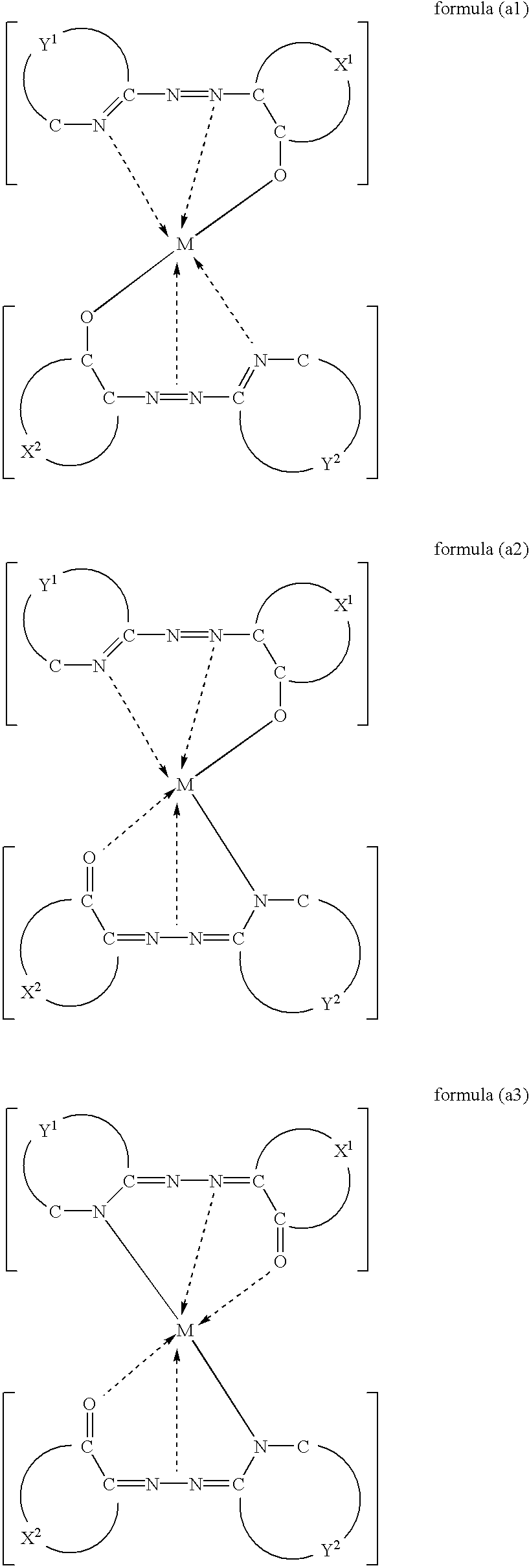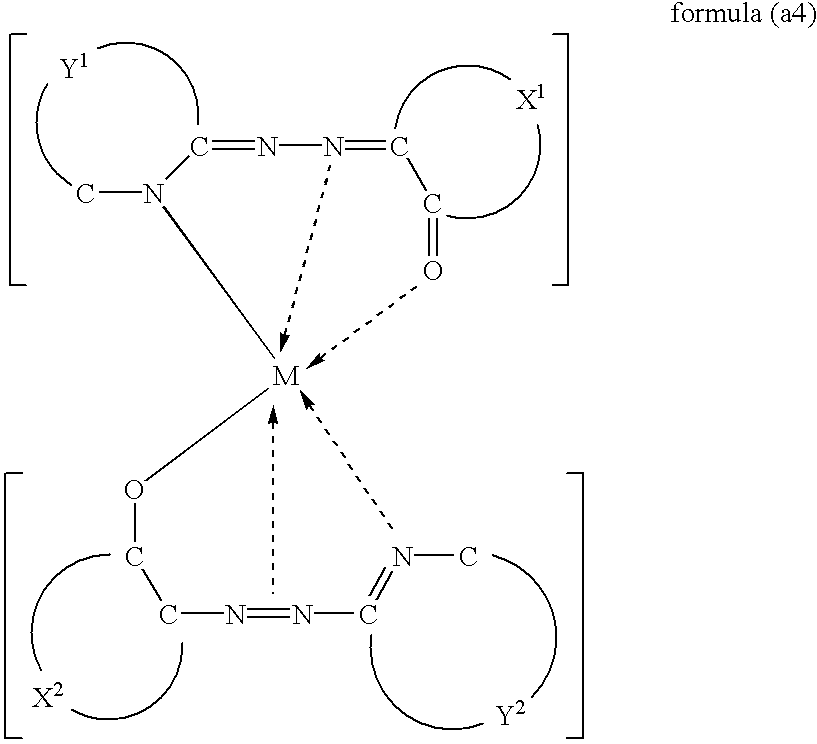Metal-containing azo compound and optical recording media
a technology of which is applied in the field of metal-containing azo compound and optical recording media, can solve the problems of affecting the tracking error signal, affecting the overall performance of the recording layer, and affecting the depth of the groove, so as to achieve the effect of improving the overall performan
- Summary
- Abstract
- Description
- Claims
- Application Information
AI Technical Summary
Benefits of technology
Problems solved by technology
Method used
Image
Examples
examples
Hereafter, description will be made as to examples of producing metal-containing azo compounds of the present invention and performance evaluation of optical recording media in which the metal-containing azo compounds were used. Here, in the synthesis of the metal-containing azo compounds, the compound obtained in each example was identified with the use of infrared spectrophotometry, mass spectrometry, NMR, and elementary analysis so as to confirm that the intended compound was obtained.
Synthesis of Azo Compound to be Bonded to a Metal
(1) Production of 1-(6-methyl-2-pyridylazo)-2-naphthol (No. L21)
A reaction flask equipped with a cooling tube and a stirrer was loaded with 2-amino-6-methylpyridine (50 g), ethanol (250 ml), and sodium ethoxide (9.4 g), followed by dropwise addition of isopentyl nitrite (54 g) to the flask in 30 minutes with stirring. The resultant mixture was heated and further stirred at 75 to 80.degree. C. for 4 hours for reaction. Thereafter, the heating was stopp...
examples 1 to 27
Synthesis of Metal-containing Azo Compounds
Two azo compounds were selected from the above azo compounds (1) to (20) and reacted with a metal ion to obtain an intended metal-containing azo compound respectively.
In the synthesis of each metal-containing azo compound, a metal acetate was used and methanol or a methanol-dioxane mixed solvent was used as a solvent. In Examples 1 to 27, the synthesis of each compound was carried out by charging the azo compounds and the solvent into a reaction flask and stirring them followed by addition of the metal acetate, and then stirring at a reflux temperature of the solvent for 1 to 6 hours, and optionally purifying by means of recrystallization and so on. Reaction progress was almost quantitative and the intended product was obtained in an 80% yield in each example even when the product was purified.
It should be noted that there is a case where the finally obtained crystal contains a compound(s) in which the same two ligands are bonded to the met...
PUM
 Login to View More
Login to View More Abstract
Description
Claims
Application Information
 Login to View More
Login to View More - R&D
- Intellectual Property
- Life Sciences
- Materials
- Tech Scout
- Unparalleled Data Quality
- Higher Quality Content
- 60% Fewer Hallucinations
Browse by: Latest US Patents, China's latest patents, Technical Efficacy Thesaurus, Application Domain, Technology Topic, Popular Technical Reports.
© 2025 PatSnap. All rights reserved.Legal|Privacy policy|Modern Slavery Act Transparency Statement|Sitemap|About US| Contact US: help@patsnap.com



